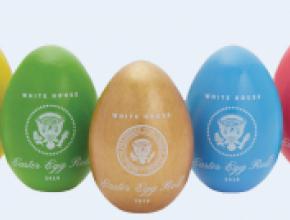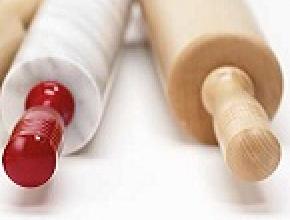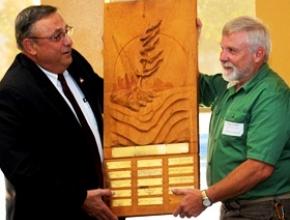Thousands of colorful wooden Easter eggs are making the journey from Maine to the White House for this year’s annual White House Easter Egg Roll.
For the second year in a row, Maine Wood Concepts, a wood turning factory located in New Vineyard, Maine, will turn out about 100,000 birch Easter eggs to meet the exacting specifications of the White House Historical Association.
“Maine Wood Concepts has proudly made the collectable eggs multiple times over the last two decades and is extremely proud to play an important role in a time-honored American event,” said Michael W Conway, director of sales and marketing, for the company.

White birch logs used to make the eggs are harvested locally from FSC Certified forests and then processed at Maine Wood Concepts’ sawmill. Once the wood has been properly prepared, it is made into eggs, finished with multiple coats of enamel and imprinted. “All of this is done completely at the Maine Wood Concept facility in New Vineyard, Maine, for an exclusively Maine made product,” said Conway.
This year’s edition of the eggs have five versions. Standard eggs feature a picture of the White House on one side and signatures of President Donald Trump and First Lady Melania Trump on the opposite side. They come in four colors: red, green, rose, and blue. A fifth style of egg is gold colored and has the presidential seal instead of a picture of the White House. According to the White House Historical Association, the Official 2019 White House Easter Eggs are inspired by the rich colors found in the White House State Rooms and gardens: the Green Room, the Blue Room, the Red Room, the Vermeil Room (gold), and the Rose Garden.

WHHA began selling the Official 2019 White House Easter Eggs on March 15, 2019. Additionally, the limited-edition wooden eggs will be given as gifts to children attending the White House Easter Egg Roll on April 22, 2019. The eggs will be available for purchase to the public while supplies last at: https://shop.whitehousehistory.org/holidays/easter.
The Easter Egg Roll is one of the oldest annual events in White House history. Beginning in the 1870s, Washingtonians from all walks of life celebrated the Monday after Easter on the West Grounds of the U.S. Capitol. In 1876, however, Congress restricted public use of the Capitol due to concerns about damaging the landscape, prohibiting future egg rolling on its grounds. The new edict went unchallenged in 1877 since rain cancelled all the activities that day. In 1878, President Rutherford B. Hayes decided to open the White House South Lawn to egg rollers, as it had previously been reserved for the First Family’s private Easter activities. From that moment on, a new tradition was born.
The primary entertainment during this annual event has always been egg rolling. As the Egg Roll tradition evolved, wooden eggs have grown to replace real eggs, which created a foul odor and messy clean up when smashed. Today, wooden eggs, created and available exclusively through The White House Historical Association, are used in the White House Easter Egg Roll and given as gifts to children attending the event.
Since the start of the Easter Egg Roll, the role of the First Family has varied:
- President Benjamin Harrison gave his grandson limited exposure to the crowds and the Clevelands kept their daughters inside and away from the rollers.
- Grover Cleveland hosted an audience of children for both his terms in office. In 1885, children with baskets of brightly dyed hard-boiled eggs were reported by The Washington Post to have ruined the East Room carpet with broken egg shells and smashed hard boiled eggs.
- Theodore Roosevelt’s family watched from the portico, while Edith Wilson invited family friends and cabinet members to join in the Egg Roll, and two Hoover grandchildren spoke from the bandstand for news crews in 1931.

To make the White House Easter Eggs, Maine Wood Concepts typically starts production months in advance. The company employs about 95 people making a wide variety of turned wood products usually from domestic hardwoods. Products range from salt and pepper shakers to toy parts, tool handles, and parts for furniture. For more information regarding Maine Wood Concepts, visit: www.mainewoodconcepts.com.







Have something to say? Share your thoughts with us in the comments below.